Lymington, Hampshire
Up to 1834
Lymington's first workhouse was built in 1738 at a cost of £248 10s. It was located about 90 yards down what is now East Hill, immediatley befor the corner with Broomfield Lane. The first master, Richard Budden, was appointed in May 1739 at a salary of £10 per annum, with Henry Hackman providing "the necessary medicines and proper assistance in surgery" on the same terms. There appears to have been attempts to keep women out of the establishment, with records indicating that widows were provided with spinning wheels and "brewings of malt" in order to make a living. In 1776, the workhouse could house up to fifty inmates. The building was enlarged in 1789.
In addition to Lymington, a parliamentary report of 1776 listed parish workhouses at Boldre (accommodating 26), Brockenhurst (20)and Milford (40). The Milford workhouse was at 8 High Street, a property now known as Bay Trees and providing B&B accommodation.
In 1792, the old workhouse at Boldre had become 'a wretched place, and managed without any economy at a great expence'. It was replaced by a new building, constructed in red brick and measuring 82 feet by twenty feet, which stood on a 2½ site. On 19 May 1793, the inmates of the old house, consisting of ten or so adults and between twenty and thirty children, were transferred to the new premises and placed under the care of Mr and Mrs Salter. The old women were employed in cooking, mending and washing; the old men in the garden; and the children and some of the women in spinning snd weaving. Children as young as four were employed and earned about a penny a day. In summer, work was begun at six, in winter as soon as it was light. There were hour-long breaks for breakfast and dinner.
A parish workhouse also existed at Hordle, at the east side of Woodcock Lane.
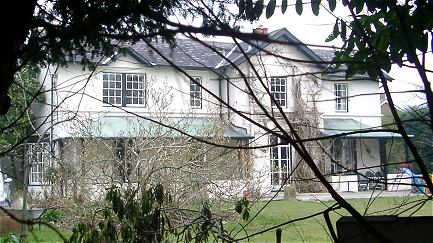
Hordle former parish workhouse from the south, 2003.
© Peter Higginbotham.
After 1834
Lymington Poor Law Union was formed on 18th May 1835. Its operation was overseen by an elected Board of Guardians, 12 in number, representing its 6 constituent parishes as listed below (figures in brackets indicate numbers of Guardians if more than one):
Hampshire:
Boldre (3), Brockenhurst, Hordle, Lymington(4), Milford (2), Milton.
Later Additions: Pennington (from 1911), Rhinefield, Sway (from 1866).
The population falling within the Union at the 1831 census had been 9,501 with parishes ranging in size from Hordle (population 699) to Lymington itself (3,361). The average annual poor-rate expenditure for the period 1831-34 had been £5,471 or 11s.6d. per head of the population.
A new union workhouse was erected in 1837 at the north side of the junction of New Street and East Hill in Lymington, adjacent to the parish workhouse site. In 1835-6, the Poor Law Commissioners authorised an expenditure of £4,500 on construction of the buildings which was to accommodate 200 inmates. The building was designed by Sampson Kempthorne and was based on his model "200-pauper" plan published by the Commissioners in 1836. The workhouse layout is shown on the 1860 map below.
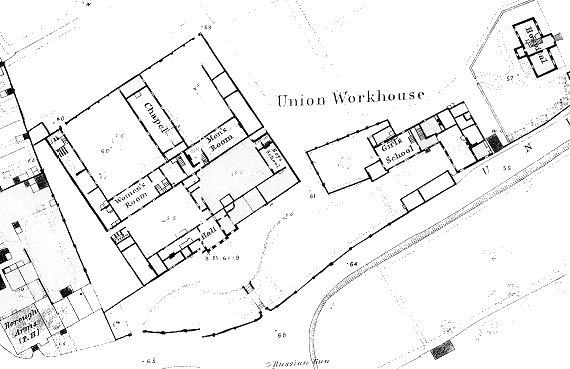
Lymington workhouse site, 1860.
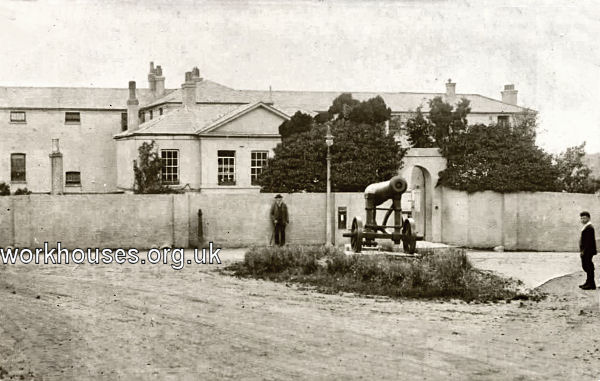
Lymington workhouse, early 1900s.
The entrance block at the south contained a waiting hall, with a porter's room and search room to the left, and a bread room and lavatory to the right. On the first floor were the Guardians' board-room and clerk's office.
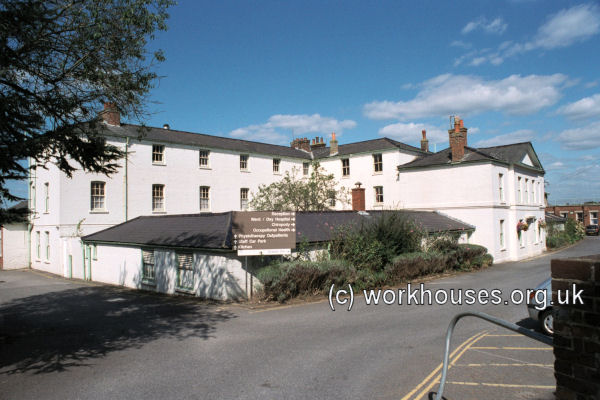
Lymington from the south-east, 2000.
© Peter Higginbotham.
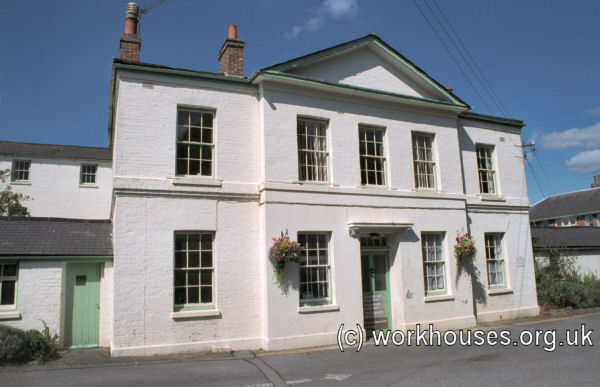
Lymington entrance from the south, 2000.
© Peter Higginbotham.
To the rear, men's and women's accommodation ranges stood to the east and west, originally linked to the front block by a dining-hall. By 1860, the school-rooms had been relocated, the boys to the south-east of the main building and the girls to a separate block at the east. A chapel was situated in the north range. A building refrerred to as the Master's House stood at the east of the site, where the old parish workhouse was located.
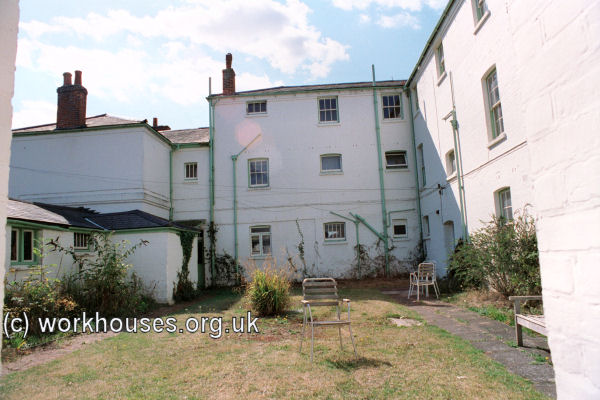
Lymington south-east courtyard from the east, 2000.
© Peter Higginbotham.
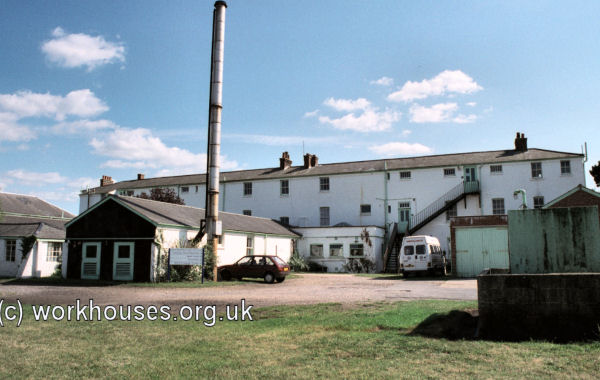
Lymington workhouse from the north-west, 2000.
© Peter Higginbotham.
The single-storey blocks around the perimeter of the main building were utility rooms and workshops. Along the west (women's) side were a wash-house and laundry. A detached infirmary stood at the east of the workhouse. It was replaced by a new building in 1928.
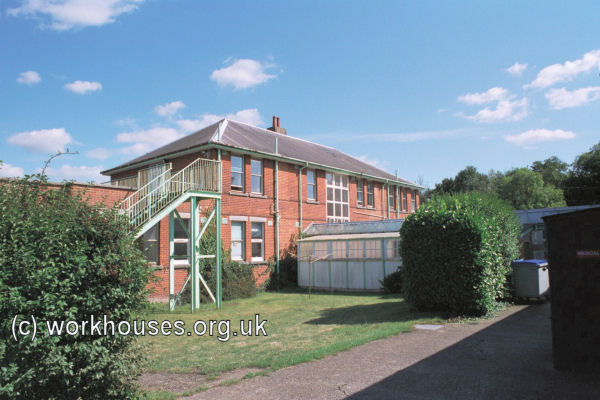
Lymington workhouse infirmary from the north-west, 2000.
© Peter Higginbotham.
From around 1904, the birth certificates of those born in the workhouse did not indicate this, so as not to stigmatise such people in later life. Instead, just an anonymous street address was given — in this case, the place of birth was recorded just as 20 New Street, Lymington.
In more recent times, the site became Lymington Infirmary. The hospital closed in 2004 for the site to be redeveloped.
Staff
Inmates
Records
Note: many repositories impose a closure period of up to 100 years for records identifying individuals. Before travelling a long distance, always check that the records you want to consult will be available.
- Hampshire Record Office, Sussex Street, Winchester SO23 8TH. Very few records survive — holdings Creed register (1924-51); Punishment book (1914-45); etc.
Bibliography
- Cannon, James Lymington Infirmary from the Poor Law to the NHS.
- King, Edward (1958) The First Lymington Poorhouse (Lymington Historical Society)
- Gilpin, William (1801) in The Hampshire Repository (vol 2.)
Links
- None.
Acknowledgment
- Thanks to Stephen Schwarz for information on Lord Henniker.
Unless otherwise indicated, this page () is copyright Peter Higginbotham. Contents may not be reproduced without permission.


